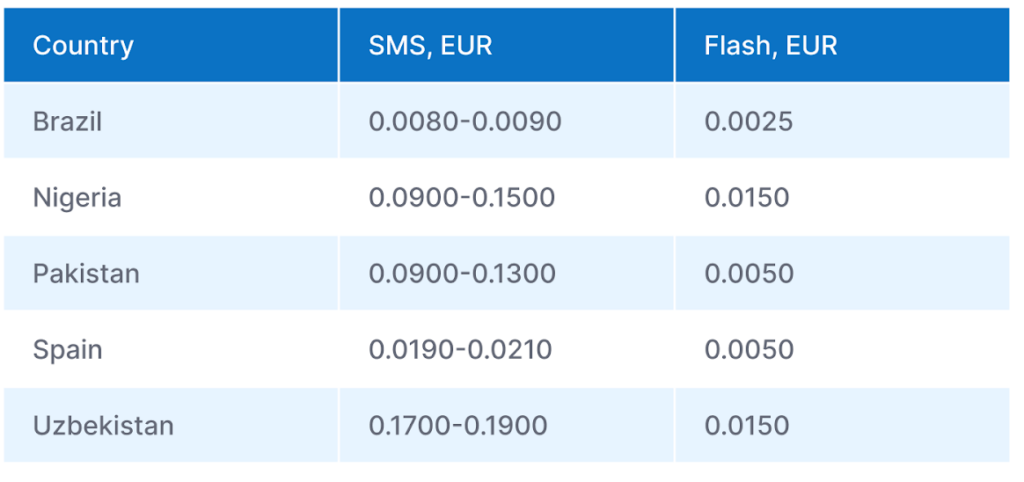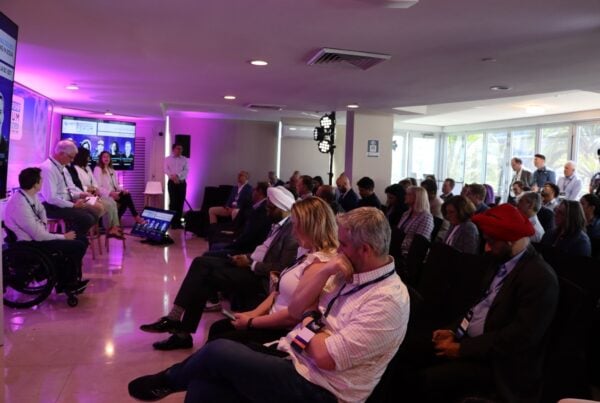Igor Skutsenya, Senior Business Development Manager at LANCK Telecom, discusses the latest developments and trends surrounding flash calls, following a productive discussion with MEF’s Director of Programmes, James Williams. LANCK was a key contributor to the recent MEF Global Forum seminars in Barcelona, which are available to view in full now.
LANCK Telecom recently launched its T o’clock webcast series with a discussion of flash calls. We invited top speakers to present the perspective of operators and service providers as well as a balanced view from MEF. I would like to share some insights.

An alternative to SMS OTPs
Flash calling is a cost-efficient and relatively frictionless alternative to international A2P SMS, alongside other channels such as email, Pin2Speech, and OTTs. Flash calls deliver one-time passwords (OTPs) to customers as digits of the calling number. As James Williams noted, flash calling emerged about 5 years ago, and 2 years ago social networks, OTTs, and Big Tech started using them on a much greater scale.
Rapidly rising SMS prices are a major factor contributing to the increasing volume of flash calls. As Carlos DaSilva, Vice President of Mobility Products at PCCW Global, reported in our webcast, there is a direct correlation between the widespread adoption of flash calls for specific destinations and the high price of SMS in those regions.
Here’s a graph and table to illustrate this point:
Approximate prices of flash calls and SMS

In fact, Juniper Research predicts that flash call volume will increase 25-fold from 2022 to 2026, from 5 to 130 billion.
Flash call use cases
Another reason for the use of flash calls is that, in some use cases, they provide a superior user experience compared to SMS OTPs. Specifically, their in-app use on Android devices provides a frictionless user experience, as the app automatically rejects the incoming call attempt and extracts the OTP from the calling number.
In other use cases, such as missed calls or web browser authentication, flash calls provide a worse user experience than SMS OTPs due to the lack of user familiarity and the need to manually input the calling number digits. This leads to call center complaints, potential service abandonment, and wasted resources, making those use cases less common.
Overall, SMS OTPs offer superior conversion. However, there are some markets where the quality of SMS OTP delivery is poor, with lengthy delays and failures, so flash calls can provide better reach for some destinations.
The divisive flash call
Flash calls offer great financial opportunities for apps and service providers. Some market players refer to it as a product evolution with potentially better user experience.
However, according to Markus Balasus, Voice & Mobile Services Product Manager at Deutsche Telekom Global Carrier, certain players think flash calls will cannibalize the SMS OTP market. A small percentage of operators and firewall vendors even label flash calls as a form of SMS OTP bypass fraud.
This is because terminating operators don’t earn any revenue from zero-duration calls, regardless of origin. So when service providers use flash calls instead of A2P SMS, operators and transit carriers lose potential SMS termination revenue and, perhaps, have their networks exploited.
Yet, according to recent data by Deutsche Telekom Global Carrier, only 43% of operators can detect flash and just 8% are able to monetize them. This is because accurate detection and blocking require very sophisticated AI-based tools.
Survey results of Deutsche Telekom Global Carrier – Fall 2022:

The issue of accurate detection
No matter how flash calls are viewed, accurate detection is the first step operators must take to devise the most beneficial billing or blocking policy.
This has proven difficult because most anti-fraud systems can’t discern OTP flash calls from fraud schemes that rely on drop calls, such as wangiri, or from genuine zero-duration calls placed by customers. What’s more, a solution is needed that will accurately distinguish between flash calls covered by a billing agreement and those that aren’t.
Thankfully, there are already solutions on the market that meet this challenge.
Outstanding accuracy of flash call detection is already here
To solve the issue, LANCK Telecom included a flash call detection feature in its updated Fraud Management System (FMS).
The FMS engine uses in-house-developed mathematical models and deep-learning algorithms to analyze 200+ call parameters in real time. The FMS also uses a comprehensive database of flash call A-number ranges that is constantly updated. Our engine learns on 150+ million live call attempts daily, so the accuracy of detection keeps improving.
The resulting accuracy of flash call detection is 99.92%, which is well above the industry average. What’s more, the detection happens in real time as the flash call is attempted. As a result, the operator can choose to block the flash call before it reaches the subscriber.
The FMS gives operators all the necessary information to negotiate a billing agreement with a flash call provider. It’s easy to download log files because our tool has built-in reporting capabilities. Once an agreement with a 2FA service provider has been reached, it’s simple to add the approved A-number ranges into the logic of the FMS. All flash calls not covered by agreements can be blocked automatically.
In conclusion, flash calls are certainly here to stay and every operator has to choose how to handle them to maximize revenue. But the first step must be the widespread adoption of advanced detection tools to manage this verification channel, much like A2P SMS. Such internal regulation would be more beneficial for the market than external intervention by regulators.







